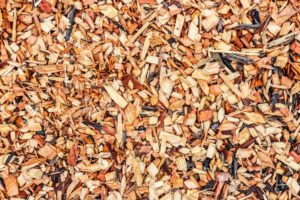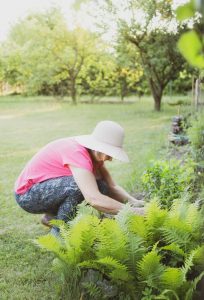
How To Kill Weeds In Your Garden and keep them gone!
You’ve done all the research and plotted the perfect layout. You know all the planting zones. And you have tracked the sun and can predict it’s hourly movement. Then you have your planting guides in hand, and walk with confidence to your garden and it hits you – nothing you have read has prepared you for the war on weeds that seems to becoming a serious threat, this spring! I know what you’re thinking. I’ve been there. “Regardless of the planting zones. Never mind the well-meaning planting guides. Those spaces in between your perfectly straight rows are NOT reserved for water sucking, nutrient grubbing weeds!!! Where did they come from?!” So let’s talk about how to how to kill weeds In your garden and keep them gone!

Gardeners of all experience levels have uttered the exasperated sigh as one looks around the garden and realizes the health of their weeds. It seems to literally happen overnight, sometimes! You water and fertilize and repeat. You create the perfect habitat for your veggies and flowers to grow and flourish…. What’s good for the goose is good for the gander, though, and the same principle applies to weeds who are far less picky. Don’t fret. Chalk it up to your green thumb and keep reading for some helpful tips on how to kill weeds In your garden and better control what your gardening efforts produce.
Start Out by Keeping Them Out
When treating your beds at the beginning and end of each season, there are better options than perverting nutrient rich soil with harsh herbicides. Herbicides don’t discriminate which roots they destroy so once mixed with the soil, can greatly damage the chemical make-up of nutrients and acidity levels. The soil, in return, acts against the plants you intend to grow. They also harm beneficial micro-organisms that are in the soil like nematodes and important pollinators like our friend, the bee.

Whether you are cleaning out ground beds or filling raised beds, start by “starving out” the underlying grass or weeds left over from the elements of summer and fall. If you are tilling a ground bed, remember that weeds need light to grow. When you turn soil, you are exposing dormant seedlings to light and warmth. So, till and then cover the ground to keep the light out. This will literally drown out a weed problem that could sprout up, later. Newspaper or landscaping tarp are highly recommended gardening covers to use. Both will keep any uprooted seedlings from receiving any sunlight to achieve germination. Cardboard is also a good resource for covering freshly tilled earth but it is difficult to tear into for planting. These efforts definitely will kill weeds In your garden.
If you intend to you use raised beds, though, cardboard makes more sense. Both cardboard and newspaper are made up of organic materials that will eventually break down and turn into compost – adding to your overall soil nutrients! Yes! You can kill weeds AND fertilize at the same time!

A nice layer of mulch on top of your covering of choice will help hold it in place. It also helps protect seedlings and plants alike, once you begin planting. Mulch keeps the gardening soil from getting too hot or drying, too, during the warmer summer months. Let’s not forget how nice it looks, too!
Be Proactive
Because healthy gardens attract wildlife like bugs and birds, weeds, I’m sorry to say, are inevitable. Being proactive about hand pulling weeds will greatly keep (eh hmm…) “transplant” weeds from becoming a problem. Plus, going to pull weeds gives you an excuse for gardening every day! Plucking tiny weeds as a daily devotion is not just somewhat satisfying. It protects your intended plants by keeping the roots too small to cause any damage to any desirable roots. On top, the weed doesn’t have time to grow and spread. Say it with me – “clean beds make for cool heads!”
Perhaps the most productive method to kill weeds In your garden is also the most obvious: Don’t water the weeds! If you haven’t before, I strongly advise considering drip irrigation for all watering purposes from hanging baskets to ground beds and everything in between. Especially if you live in a hotter climate, drip irrigation will make watering your space more effective and efficient. Drip irrigation centralizes the dispersing of water directly to the root of your desired plants and not all over the flower beds. One major mistake we make when trying to keep healthy veggies and flowers is watering the whole bed – plants, weeds, and bare dirt alike. This creates a handful of problems starting with (well, weeds, for one), overwatering, underwatering and just wasting water. Work smarter not harder – even in the garden! (Am I right?!)

Watering Rocks
Watering Rocks are the perfect self-watering system for hanging plants as well as flower beds and gardens. They add style and functionality to any yard. Watering Rocks don’t just look pretty, though. They save a lot of time and energy spent using hoses on watering away or out-of-reach plants. Each five-gallon plastic rock can water up to 3 days without needing to be refilled. You can cut watering time in half and be more effective with Watering Rocks. The kit is easy to set up, You will not only be setting up an irrigation system, you’ll be setting yourself up for success (and less stress!)

Weeds tend to defy all planting zones and weather conditions. They seemingly feed off our disdain. With some early preparation, daily walk-thru and drip irrigation, though, you can keep them reigned in and I dare say – under control- this year. Friends will admire how clean and effortless your yard looks with a daily once over and efficient watering system. You’ll be able to sit back and enjoy the fruits of your labor more often, too. We hope you have enjoyed this article. Please visit our website for more informative articles and information about our portable automatic drip irrigation kits. We also have a free book available, 101 Ways To Save Water in Your Garden”.
